| Share |  |
 | |||
Progesterone - The Hormone Harmonizer

Natural progesterone is the most beneficial hormone for correcting and alleviating symptoms of hormone imbalance that women experience today. Since progesterone is the essential raw ingredient of reproductive hormones, it possesses the unique ability to regulate and keep other hormones in balance.
It is believed that at least half of premenopausal women currently living in industrialized societies are low in progesterone. The combined effect of low progesterone and excess estrogen from widespread exposure to estrogen mimics in our food supply and environment lead to a condition known as estrogen dominance (please see my article “Healthy Hormone Balance” for more information on this topic). Many of the hormone related symptoms and conditions women suffer are due to this particular form of imbalance.
One of the most important roles of progesterone is to offset the negative effects of excess estrogen caused by estrogen dominance. Progesterone is by no means a cure-all nor should its use take the place of following the nutritional and lifestyle modifications needed for healthy hormone balance covered in my previously mentioned article. However, restoring deficient levels can greatly help to correct hormone imbalance when used appropriately. Besides providing relief from unpleasant symptoms, using natural progesterone offers many health benefits, not the least of which is protection from developing breast cancer and other serious health conditions.
Signs of Progesterone Deficiency
If you took the “Hormone Balance Test” in my article “Balancing Hormones Naturally,” you may already realize that you are possibly low in progesterone. PMS symptoms, insomnia, painful and/or lumpy breasts, unexplained weight gain, cyclical headaches, anxiety, early miscarriage and infertility were the most common symptoms Dr. John Lee noted from his decades of working with women’s hormone imbalance issues. In addition to these symptoms, irregular menstrual cycles - not having a period, having infrequent periods, spot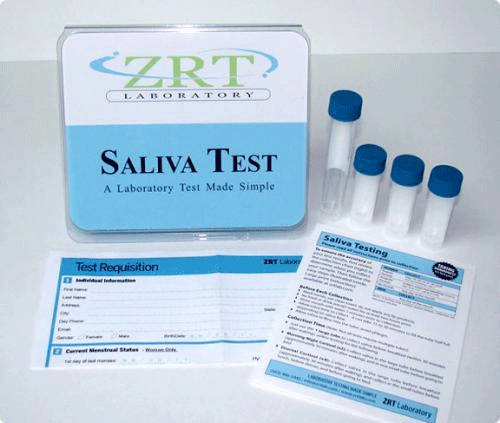 ting a few days before the period, or having frequent and unusually heavy periods - are further indicators of low progesterone levels. Though it may not be the sole cause, fibroids, endometriosis and water retention also point to progesterone deficiency.
ting a few days before the period, or having frequent and unusually heavy periods - are further indicators of low progesterone levels. Though it may not be the sole cause, fibroids, endometriosis and water retention also point to progesterone deficiency.
In order to accurately determine your progesterone levels, you may want to take a saliva hormone test to obtain laboratory confirmation. I would refer you to the section in my article “Balancing Hormones Naturally” entitled “Testing for Hormone Imbalance” for more information about saliva testing.
Due to the fact that progesterone levels fluctuate throughout the female cycle, it is important to conduct testing for progesterone levels about a week before the start of your next menstrual cycle for the most accurate results. For most women, this would be between day 19 and day 21 of their menstrual cycle.
Progesterone or Progestins?
Natural progesterone is the exact same hormone produced by a woman’s ovary. This natural form of progesterone originated fro m diosgenin, a compound found in a particular wild yam plant south of Mexico. During the 1950s, it was discovered that this plant was abundant in particular precursors identical to those used by the body to produce steroid hormones. It was later determined that the soybean plant was also an ideal concentrated source of these compounds.
m diosgenin, a compound found in a particular wild yam plant south of Mexico. During the 1950s, it was discovered that this plant was abundant in particular precursors identical to those used by the body to produce steroid hormones. It was later determined that the soybean plant was also an ideal concentrated source of these compounds.
Progestins are patented, chemically altered substitutes for natural progesterone. They were added to estrogen replacement therapy when it came to light that unopposed estrogen could cause endometrial overgrowth and increase the risk of uterine cancer. Progestins may indeed provide benefit by protecting the uterine lining from estrogen-caused cell overgrowth but they do not protect breast cells from developing cancer, and can actually increase the risk of breast cancer.
In spite of the way they mimic some of the protective effects of progesterone; synthetic progestins found in common HRT drugs such as Provera and Premarin do not provide the full spectrum of benefits of natural progesterone and should not be considered the same substance. It is easy to understand this distinction when you consider the fact that progesterone is necessary for the survival and development of the embryo through gestation, and that Provera use carries with it a risk of early abortion if taken when pregnant.
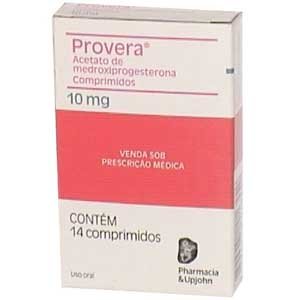 Like all drugs, progestins have side effects (the Physician’s Desk Reference lists over 30 negative side effects for the drug Provera alone). Some of the side effects occur because progestin blocks the bodies own progesterone receptors and allows excess estrogen, with its accompanying side effects, to go unchecked. Typical problems include bloating, abnormal menstrual flow, fluid retention, nervousness, difficulty sleeping, nausea, and depression.
Like all drugs, progestins have side effects (the Physician’s Desk Reference lists over 30 negative side effects for the drug Provera alone). Some of the side effects occur because progestin blocks the bodies own progesterone receptors and allows excess estrogen, with its accompanying side effects, to go unchecked. Typical problems include bloating, abnormal menstrual flow, fluid retention, nervousness, difficulty sleeping, nausea, and depression.
Of even greater concern are findings that progestins constrict arteries and chokes vital blood flow to the heart muscle, which can result in sudden onset heart attacks and severe angina. Their presence in HRT drugs such as Prempro negates any breast cancer preventative benefit of the estrogen that drug contains. Another problem with progestins is that the body regards them as foreign substances and no mechanism exists to adequately detoxify and eliminate them from the body. This places an undue burden on the liver and creates an accumulation of toxicity in the body.
Benefits of Natural Progesterone Supplementation
Women who use progesterone cream report relief from symptoms such as hot flashes, night sweats, insomnia, heavy or irregular periods, breast swelling and tenderness, endometriosis, uterine fibroids, fibrocystic breasts, bloating, irritability, and many other female conditions related to hormone imbalance. Improvements are generally noticed within weeks and many disappear altogether with consistent use. A double-blind study of progesterone cream published in the journal Obstetrics and Gynecology showed that menopausal symptoms responded to the use of progesterone cream in 83 percent of the women using it versus 19 percent in the placebo group. Besides being a safe and effective remedy for hormone imbalance conditions, natural progesterone plays a role in preventing or helping in other conditions such as:
Cancer
The presence of unopposed estrogen in tissues sensitive to hormones, such as the breasts, uterus and ovaries, can cause cancer to develop if it is not balanced with progesterone. Natural progesterone protects against breast cancer by inhibiting estrogen’s stimulation of normal breast epithelial cells. Women in their forties with sufficient natural progesterone levels were one fifth as likely to develop breast cancer and one tenth as likely to develop other type cancers in later life.
Heart Disease
The risk of heart disease and stroke increases dramatically in women with high levels of estrogen. Due to its natural diuretic action, progesterone reduces blood pressure that increases with the retention of salt and water and the loss of potassium and magnesium caused by estrogen. Progesterone also decreases the risk of coronary artery spasms by relaxing them. In addition, it decreases the risk of stroke by offsetting the formation of blood clots that are seven times more likely to occur with excess estrogen.
Osteoporosis
A progesterone deficiency is a contributing factor to the onset of osteoporosis that often occurs after menopause. Though estrogen slows the rate of bone loss, it is progesterone that stimulates cells responsible for new bone formation. Progesterone protects bones from calcium depletion and replenishes bone density by recruiting a hormone known as calcitonin inhibits bone resorption. A three year study of 63 post-menopausal women using progesterone 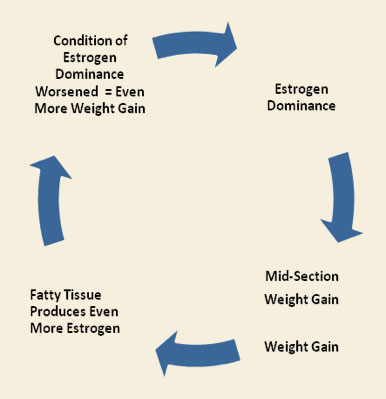 cream for osteoporosis showed an average of 7-8% increase in bone mass density the first year, a 4-5% increase the second year and a 3-4% increase the third year. Untreated women in this age category typically lose 1.5 per cent bone mass density per year. It is recommended that women over the age of 50 use natural progesterone cream, along with other dietary measures and supplements, to prevent osteoporosis.
cream for osteoporosis showed an average of 7-8% increase in bone mass density the first year, a 4-5% increase the second year and a 3-4% increase the third year. Untreated women in this age category typically lose 1.5 per cent bone mass density per year. It is recommended that women over the age of 50 use natural progesterone cream, along with other dietary measures and supplements, to prevent osteoporosis.
Excess Weight
Progesterone can counteract many of the effects of estrogen dominance that create weight gain. It helps to normalize blood sugar levels, which keeps insulin levels from rising. Less insulin means less storage of fat (estrogen instructs the body to store calories as fat) and balanced blood sugar levels help to alleviate cravings and binge eating. Progesterone also acts as a natural diuretic to prevent water retention and bloating caused by excess estrogen. In addition, it helps to metabolize body fat for energy production. One way it does this is by facilitating thyroid hormone activity, which is inhibited by estrogen dominance. Optimal thyroid function is essential for an efficient metabolism.
The table below offers a summary of some of the effects of progesterone compared to estrogen so you can better understand the importance of balancing excess estrogen with adequate levels of progesterone.
Effects of Estrogen |
Effects of Progesterone |
|
Stimulates breast cysts |
Protects against breast cysts |
|
Increases body fat storage |
Helps use fat for energy |
|
Causes the body to retain salt and fluid |
Acts as a natural diuretic |
|
Can cause depression |
Acts as a natural anti-depressant |
|
Interferes with thyroid hormone |
Facilitates thyroid hormone action |
|
Increases blood clotting and risk or stroke |
Normalizes blood clotting |
|
Decreases libido (sex drive) |
Increases libido |
|
Loss of zinc and retention of copper |
Normalizes blood sugar levels |
|
Reduced oxygen levels in all cells |
Restores proper cell oxygen levels |
|
Increased risk of endometrial cancer |
Prevents endometrial cancer |
|
Increased risk of breast cancer |
Helps prevent breast cancer |
|
Helps decrease bone loss slightly |
Increases bone building |
Safety and Side Effects of Natural Progesterone
Natural progesterone is extremely safe and side effects are rarely reported unless it is used in amounts that are well above what the body would normally make. The female body produces approximately 20-30 milligrams per day from the middle to the end of the menstrual cycle and up to 400 milligrams during the third trimester of pregnancy, with no ill effects to mother or baby.
An overdose of natural progesterone is not likely to occur due to the fact that progesterone is a natural precursor to the synthesis of other hormones and can easily convert any excess to other hormones. But if chronically high doses of progesterone are given over many months, progesterone receptors could eventually turn off. This would reduce the effectiveness and ability of progesterone to offset the negative effects of estrogen and could produce symptoms such as lethargy or excessive sleepiness, bloating, and susceptibility to yeast infections. The only other concern with using natural progesterone cream is that the timing of the menstrual cycle could be slightly altered if it were to be used at the wrong times of the month. Overall, the  percentage of women who suffer any side effects is extremely small.
percentage of women who suffer any side effects is extremely small.
The Most Effective Form of Natural Progesterone
The most convenient and effective way to supplement the hormone progesterone is to use a progesterone cream that is applied transdermally. Transdermal progesterone is absorbed through the skin into the underlying fat layer. From there it diffuses into the capillaries that permeate the fat, where it then is taken up slowly in the blood and disbursed into the rest of the tissues of the body. The fact that hormones are effectively absorbed through the skin is well verified by many studies. Of all of the steroid hormones, progesterone is the most absorbable.
It only takes seconds from the time progesterone is applied topically until the active ingredients are circulating in the blood. Peak levels are reached in three to four hours. Levels then drop rapidly for eight to twelve hours and eventually reach baseline (before progesterone) in 12 to 36 hours. Oral dosages of progesterone peak in one or two hours and then decline to low levels for the rest of the day. By applying natural progesterone cream twice a day transdermally, levels are kept in close range to the amount of the hormone the body would normally release from the ovaries.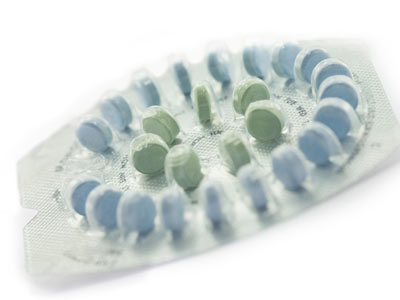
Another problem with taking oral progesterone is that it is not efficiently absorbed across the intestinal tract and must first pass through the liver before reaching the bloodstream. The liver converts approximately 90 percent of it to inactive by-products known as metabolites. This means that 100 milligrams would have to be taken for five milligrams to reach the bloodstream. Because the digestive system is by passed, transdermal applications are ten times as effective as oral forms of progesterone. Larger amounts of metabolites produced by higher oral progesterone dosages can even affect neurotransmitter systems in the brain and impair memory or cause depression.
An additional advantage to using natural progesterone cream in amounts similar to what the body produces is that it allows the liver to keep up with the excretion of these metabolites. This is important because metabolites not efficiently removed can accumulate and alter estrogen receptors and cell membranes.
Timing and Dosage for Progesterone Cream
The main goal in progesterone supplementation is to use the amount that most closely approximates what your body would make itself under normal circumstance. Since women differ in their biochemistry and ability to absorb and use transdermal progesterone, the amounts and timing for using progesterone could vary from the normal guidelines described below.
Fortunately, progesterone cream is so free of side effects that it is safe for a woman to experiment to see what amounts relieves their symptoms most effectively. Keep in mind that it may take three to four months of a higher amount of progesterone to achieve balance if a woman is very deficient because progesterone is initially absorbed by fat. After levels normalize, the progesterone will diffuse into the blood and lesser amounts are needed to maintain balance.Because progesterone improves the sensitivity of estrogen receptors, receptors are less sensitive when a woman is low on progesterone. In some women, correcting the deficiency of progesterone may cause breast tenderness and swelling but it usually resolves in two to three months. If this is the case, a smaller amount of progesterone cream can be used. It is important for women to observe how their symptoms are changing while they are first using progesterone cream in order to determine the amount that is best for their body.
Premenopausal Women - Premenopausal women that have estrogen dominance and are low in progesterone can use progesterone during the two weeks prior to the beginning of the next menstrual cycle, stopping a day or two before the expected period. Most premenopausal women need only 15 to 20 milligrams of progesterone daily beginning with day 12-14 of their cycle, assuming it is a typical 28-day cycle. If the cycle is shorter or longer (a normal menstrual cycle can last anywhere from 18-32 days), count backward two weeks before the normal start date of the next cycle and begin using progesterone cream on that day. Premenopausal women who are not regularly ovulating will need to use greater amounts of progesterone during the second half of their cycle to restore normal levels.
Menopausal Women - For women who are already menopausal, the use of 20 milligrams of progesterone for 24 to 26 days of the calendar month is enough to restore normal levels of progesterone within a couple of months. Half of that amount is usually sufficient to maintain those levels after that time. 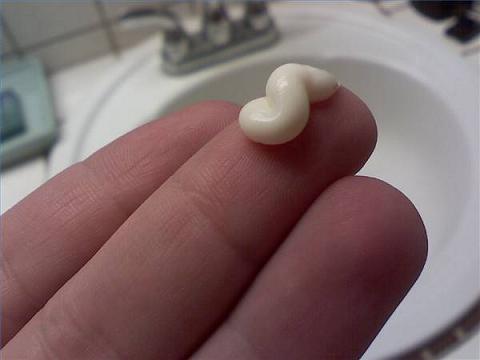
Perimenopausal Women (women with menopausal symptoms who are still menstruating) - If you are experiencing menopausal symptoms, but are still menstruating, vary the usage guidelines as follows: Do not use any natural progesterone cream from day one until halfway to ovulation, which would normally be about 7 days. For days 7 until the onset of menstruation, use 10-20 milligrams per day (increasing from 10 milligrams at day 7 to 20 milligrams about day 20). Discontinue the cream when the menstrual flow starts.
For progesterone use guidelines for correcting symptoms and conditions of hormone imbalance such as fibrocystic breasts, endometriosis, fibroids, etc., I would refer you to the section “Common Types of Hormone Imbalance Conditions” in my article “Balancing Hormones Naturally” in this same issue. With regards to the amounts and timing for progesterone use with women who have had surgical menopause, or who need help with regulating cycles or other special situations, I would recommend you obtain the book Dr. John Lee’s Hormone Balance Made Simple – The Essential How-to Guide to Symptoms, Dosage, Timing, and More.
One word of caution - be sure that the natural progesterone cream you use contains 450 to 500 milligrams per ounce or the above guidelines will not produced the desired results (some progesterone creams on the market that women may be taking only have 5 to 10 mg. of actual progesterone) Be sure also of the quality and purity of all of the ingredients in the product.
How to Use Transdermal Progesterone Cream
- Massage progesterone cream into your skin until it is noticeably absorbed. Apply it to areas where the skin is thinner, softer and has a high capillary density. The best spots are the palms, chest, lower abdomen, inner thighs, inner arms, neck, wrist and face. The palms and soles of feet are good also if they are not calloused.
- For greater absorption, spread the cream over a larger area of skin.
- Progesterone cream can be applied once or twice a day. The optimal approach is a divided dose, with a larger dose at bedtime and a smaller dose in the morning. The amount does not have to be exact since the amount of progesterone released is kept fairly steady even if daily doses vary somewhat.
- Rotate among three or four different skin sites on different days, as continual use of any single skin area will eventually saturate that area and reduce progesterone absorption.
- Use the cream at bedtime as it can be calming and help you sleep.
- Don’t apply other skin creams in areas where you apply natural progesterone.
- Take at least three to seven days off each month – this break keeps the lining of the uterus from thickening too much and allows for a complete shedding of it each month
Concluding Thoughts
For a woman, no other balance of hormones is more important than the balance between estrogen and progesterone. In an ideal world, it would not be necessary to supplement progesterone or any hormone for that matter. But due to the many factors we are exposed to that artificially raise estrogen levels, natural progesterone can provide the extra help needed to reestablish a proper balance between these two important hormones.
Sources:
Natural Progesterone – the Multiple Roles of a Remarkable Hormone by John R. Lee, M.D.
What Your Doctor May Not Tell You About Menopause by John R. Lee, M.D.
What Your Doctor May Not Tell You About Premenopause by John R. Lee, M.D.
Hormone Balance Made Simple – the Essential How-to Guide to Symptoms, Dosage, Timing and More by John R. Lee, M.D. and Virginia Hopkins
A Woman’s Guide to Natural Hormones by Christine Conrad
The Miracle of Natural Hormones by David Brownstein, M.D.
Natural Hormone Balance for Women by Uzzi Reiss, M.D., O.B. Gyn
Copyright © 2008-2015 Lucinda Bedogne, CNHP, CNC
Reader Comments...
| 2012-09-29 14:36:10 "Thank you so much for this information. I will be purchasing this cream right away. I am 61 years old and have not had a period in 2 years. I am not taking any prescription drugs and I haven't even taken an aspirin for the past 29 years. Thanks again. " - Claudia |
Post Your Comment...
|
|
||||||||||||


